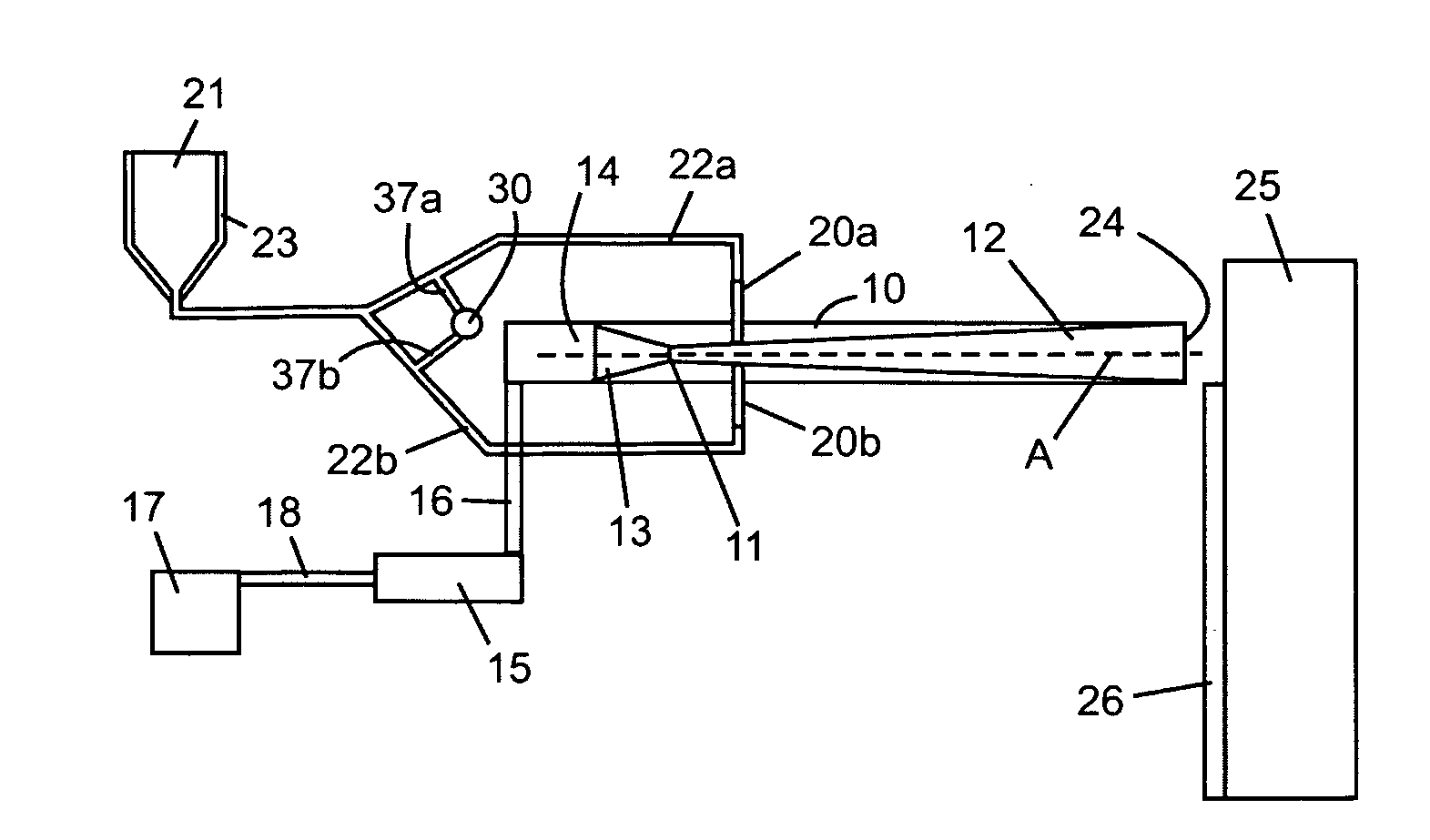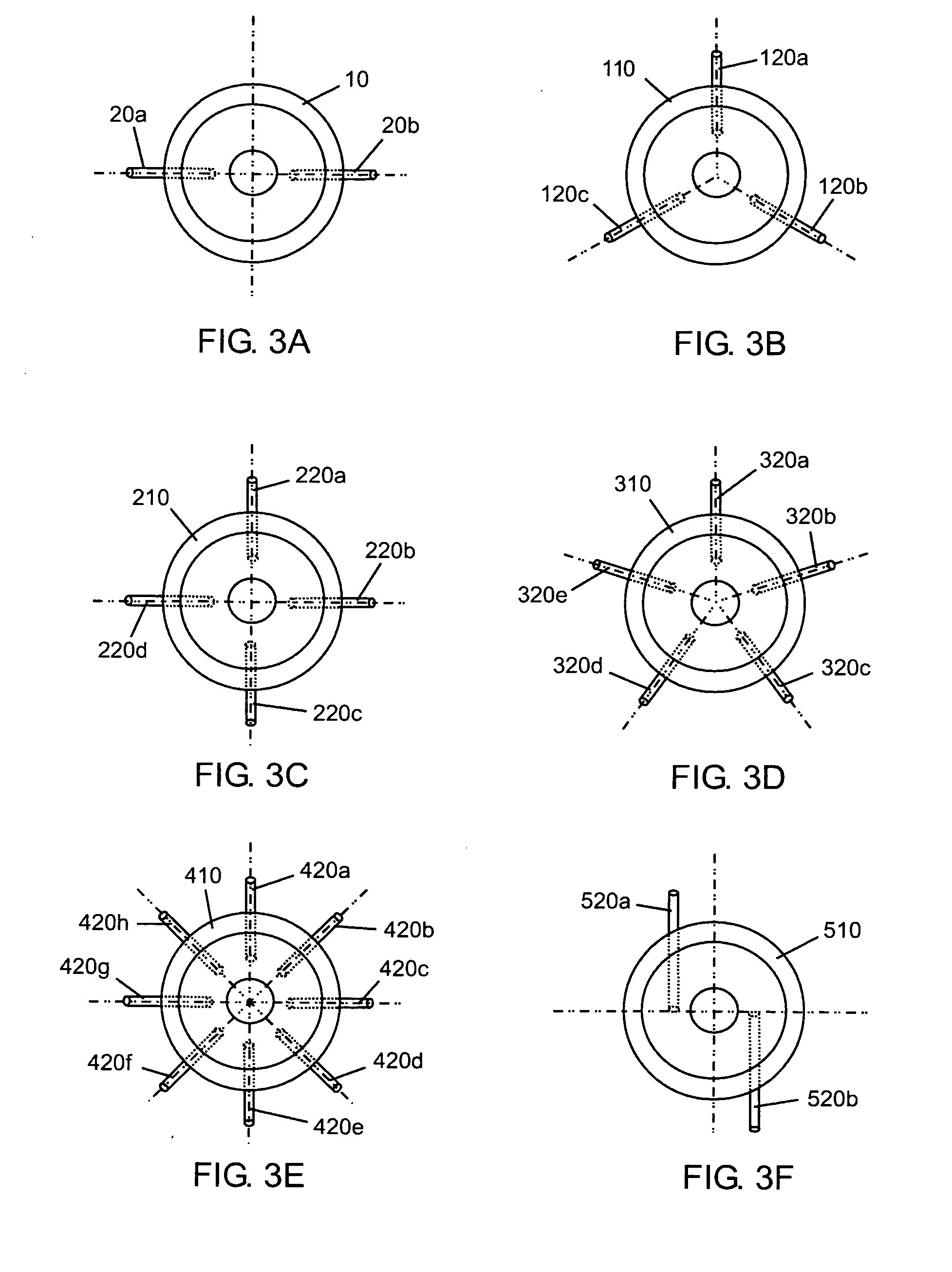Cold gas dynamic spray apparatus, system and method
a spray apparatus and cold gas technology, applied in the direction of lighting and heating apparatus, coatings, combustion types, etc., can solve the problems of clogging of the nozzle, high equipment and operational cost, and high cost of upstream powder feeding technique, etc., to achieve the effect of limiting spray efficiency, easy clogging, and optimal operation rang
- Summary
- Abstract
- Description
- Claims
- Application Information
AI Technical Summary
Benefits of technology
Problems solved by technology
Method used
Image
Examples
example 1
Numerical Modeling and Verification for Cold Spray System Performance
[0081]In order to simulate the performance of cold spray systems to better compare systems of the present invention to systems of the prior art, a numerical model was developed and verified.
Parameters Involved in Simulation
[0082]A typical de Laval type nozzle is used having a converging cone whose diameter decreases from 8.2 mm at the entrance to 2.5 mm at the throat. Downstream of the throat region is a diverging cone with a diameter of 4.88 mm at the outlet end. The total length of the diverging portion is typically 139 mm. Air is designed as the main working gas and powder carrier gas. The inlet pressure of compressed air can be adjusted to a preset value up to 830 kPa (120 psi). The main process gas temperature can be varied by an in-line heater in the range of 200° C. to 500° C. The powder is injected along the radial-inward direction of the nozzle, coming from a particle feeder, through a particle injector (c...
example 2
Nozzle Design
[0100]A nozzle for a cold spray system of the present invention has a total length of 220 mm, a throat diameter of 2.15 mm, a working gas inlet diameter of 8.2 mm, and a nozzle exit diameter of 6.5 mm. Two powder injectors with 45° injection angle are axis-symmetrically located around the nozzle downstream 13 mm from the nozzle throat. Pressurized powder injectors with a pressure up to 690 kPa (100 psi)) are used to allow higher inlet pressure (up to 3-4 MPa) and larger exit Mach number (up to 4).
example 3
Preliminary Validation Test
[0101]A preliminary test was performed using the nozzle design of Example 2. Particle exit velocities for the nozzle were measured at P0=2.5 MPa and T0=300 K. T0 is the inlet working gas temperature. Table 2 compares average measured particle velocity with average calculated particle velocity for this cold spray system. Also for comparison, Table 2 provides calculated results for different cold spray systems of the prior art.
[0102]The results in Table 2 show that the measured average particle velocity (400 m / s) from the system of the present invention is in good agreement with the predicted average particle velocity (430 m / s). It also demonstrated that the system of the present invention has much higher particle exit velocity as compared to the commercial downstream system (only about 285 m / s) and is comparable to the results of upstream system (455 m / s) even at the current simulation conditions. Thus, systems of the present invention combine the low cost ...
PUM
| Property | Measurement | Unit |
|---|---|---|
| cross-sectional area | aaaaa | aaaaa |
| cross-sectional area | aaaaa | aaaaa |
| length | aaaaa | aaaaa |
Abstract
Description
Claims
Application Information
 Login to View More
Login to View More - R&D
- Intellectual Property
- Life Sciences
- Materials
- Tech Scout
- Unparalleled Data Quality
- Higher Quality Content
- 60% Fewer Hallucinations
Browse by: Latest US Patents, China's latest patents, Technical Efficacy Thesaurus, Application Domain, Technology Topic, Popular Technical Reports.
© 2025 PatSnap. All rights reserved.Legal|Privacy policy|Modern Slavery Act Transparency Statement|Sitemap|About US| Contact US: help@patsnap.com



